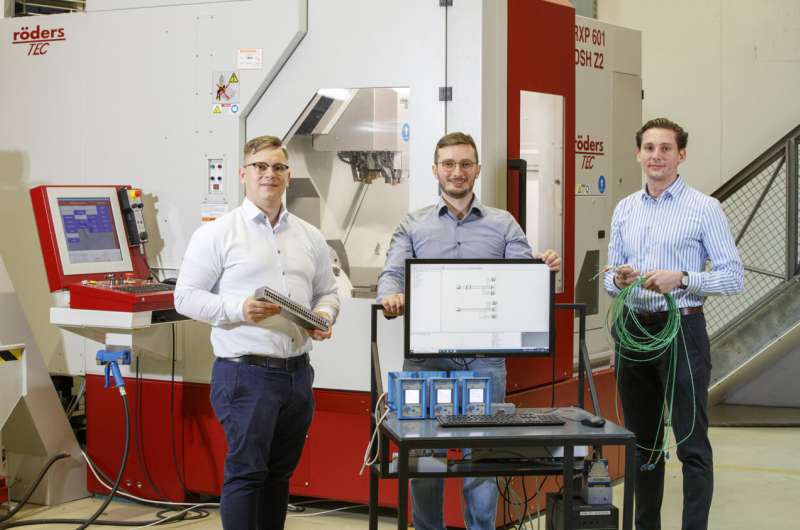Increasing the life of cutting tools through transferable AI, reducing process costs

Two factors influence the production costs of a machined component: The volume of material removed over time and tool wear. In order to reliably predict the state of wear and thus optimize cutting processes, researchers at Technische Universität Kaiserslautern (TUK) are developing a process supported by artificial intelligence (AI). They will be presenting their concept at the Hannover Messe from 30 May to 3 June at the Rhineland-Palatinate research stand (Hall 2, Stand B40). The system will be trained using real process and measurement data. The aim is to adapt the system to different process conditions by means of transfer learning.
Tools used for machining processes in manufacturing, such as drilling or milling, wear out over their period of use. Companies usually replace them prematurely after an experience-based number of operations in order to avoid quality losses or even expensive downtimes due to tool breakages. But replacing tools is also costly in terms of time and money, so it is ultimately worthwhile to optimize the replacement cycles.
"In order to be able to predict the state of wear of cutting tools, we first take process-related parameters into account," says Daniel Müller, research associate at the Institute for Manufacturing Technology and Production Systems at TUK. These include the process forces acting during cutting, vibrations and the power requirements of the machine axes. "Likewise, we collect data from continuous measurements taken on the tool and the workpiece," says the engineer. "The biggest challenge is then to determine correlations in the collected data."
For this purpose, the researchers train an AI-supported system that uses machine learning methods to recognize possible patterns and derive conclusions on the wear condition. In addition, the system is supposed to be able to predict which process parameters companies have to work with in certain machining processes in order to keep the tool in use safely and reliably for a target service life. "The data that the system needs to learn is collected from five partner companies—including global players as well as small and medium-sized enterprises," explains Daniel Müller. "In doing so, we test a wide range of variants, such as tool and material types or process parameters, and thus collect a broad data base over the entire tool life up to the failure of the tool."
These results are used to develop an adaptable basic model that is adaptable. "We use the concept of transfer learning," reports Peter Simon, who is working on the project together with Daniel Müller. "This approach is to allow the basic model to be adapted to customer-specific machining processes with as little additional effort as possible. We will moreover exploit the findings of the research project within the framework of this utilization in the form of innovative business models."



















